- Benefits of Pruning Remontant Raspberries for a Bountiful Harvest
- 1. Increased Fruit Production
- 2. Improved Air Circulation
- 3. Disease Prevention
- 4. Easier Maintenance
- Understanding the Importance of Pruning Remontant Raspberries
- The Benefits of Pruning Remontant Raspberries
- When to Prune Remontant Raspberries
- Pruning Techniques for Remontant Raspberries
- In Conclusion
- Two Methods for Pruning Remontant Raspberries
- Method 1: Summer Pruning
- Method 2: Dormant Pruning
- Method 1: Summer Pruning for Optimized Growth
- Step 1: Identify the New Primocanes
- Step 2: Remove the Old Floricanes
- Step 3: Thin Out the Primocanes
- Step 4: Prune to the Desired Height
- Method 2: Winter Pruning for Increased Yield
- Step-by-Step Guide to Summer Pruning Remontant Raspberries
- 1. Choose the Right Time
- 2. Prepare the Tools
- 3. Identify the Canes
- 4. Remove the Old Canes
- 5. Select the Strongest Canes
- 6. Prune the Selected Canes
- 7. Remove Weak Canes
- 8. Clean Up and Disposal
- 9. Water and Mulch
- 10. Monitor and Maintain
- Step-by-Step Guide to Winter Pruning Remontant Raspberries
- 1. Gather the necessary tools:
- 2. Choose the right time for pruning:
- 3. Identify the old canes:
- 4. Cut the old canes:
- 5. Shape the plant:
- 6. Remove any weak or damaged canes:
- 7. Clean up the surrounding area:
- 8. Apply fertilizer and mulch:
- 9. Monitor and maintain:
- Tips for Pruning Remontant Raspberries Like a Pro
- Maximizing Harvest with Pruning: Success Stories and Key Takeaways
- Success Stories
- Key Takeaways
- Question-answer:
- How often should remontant raspberries be pruned?
- What is the purpose of pruning remontant raspberries?
- Can pruning remontant raspberries help control pests and diseases?
- How should I prune remontant raspberries for maximum fruit production?
- What should I do with the pruned canes?
- Video: Pruning Everbearing Raspberry Bushes! 4 Simple Steps For TONS Of Raspberries!
Remontant raspberries, also known as everbearing or fall-bearing raspberries, are a popular choice for both home gardeners and commercial growers. These raspberries produce fruit on the current year’s growth as well as on primocanes that emerge in the spring. To maximize the harvest and ensure the health of the plants, proper pruning is essential.
There are two main methods for pruning remontant raspberries: the traditional method and the modern method. The traditional method involves cutting back all the canes to the ground in late winter or early spring. This allows new canes to grow and produce fruit in the summer and fall. However, this method requires more time and effort, as each cane must be individually pruned.
The modern method, on the other hand, involves pruning only the primocanes that have finished fruiting. Primocanes are the first-year canes that emerge from the ground in the spring. By removing only the canes that have produced fruit, the plant can focus its energy on producing new canes and a second crop of fruit in the fall. This method is less labor-intensive and can result in a higher overall yield.
Both methods have their advantages and disadvantages, and the choice ultimately depends on the gardener’s preference and available time. Regardless of the method chosen, it is important to maintain good air circulation within the raspberry patch, as this helps prevent disease and ensures optimal fruit development. Regular removal of dead or diseased canes is also important for maintaining the health and productivity of remontant raspberries.
Pruning remontant raspberries is a crucial part of their care and cultivation. By using the traditional or modern pruning method, gardeners can maximize the harvest and maintain the health of their plants. With proper pruning, remontant raspberries can provide a bountiful supply of delicious fruit throughout the growing season.
Benefits of Pruning Remontant Raspberries for a Bountiful Harvest
Pruning remontant raspberries is an essential practice for maximizing the harvest of these delicious berries. By removing certain parts of the raspberry plants, you can encourage better fruit production, improve air circulation, and prevent the spread of diseases. Here are some key benefits of pruning remontant raspberries:
1. Increased Fruit Production
- Pruning stimulates the growth of new canes, which in turn leads to more fruit production.
- By removing old and unproductive canes, you allow more energy to be redirected towards the development of new canes and the production of delicious berries.
- Pruning helps in creating a healthier and more productive raspberry patch.
2. Improved Air Circulation
- Pruning opens up the raspberry patch, allowing better air circulation among the canes.
- This reduces the risk of fungal diseases, such as powdery mildew and botrytis, which thrive in humid and stagnant environments.
- Good air circulation also helps in drying out the plants after rain, decreasing the likelihood of diseases spreading.
3. Disease Prevention
- Pruning removes diseased or damaged canes, which may harbor pests and diseases that can spread to healthy canes.
- By removing these canes, you can prevent the further spread of diseases, ensuring the health of your raspberry plants.
- Proper pruning techniques also help in preventing overcrowding, which can lead to increased susceptibility to diseases.
4. Easier Maintenance
- Pruning remontant raspberries makes it easier to manage the plants and perform other maintenance tasks, such as mulching, fertilizing, and harvesting.
- With well-pruned canes, you have better access to the fruit and can easily spot any issues that may arise.
- Pruned raspberry plants are generally more organized and neat, making them easier to navigate and care for.
By understanding the benefits of pruning remontant raspberries, you can maximize your harvest and ensure the health and productivity of your raspberry plants. It is important to follow proper pruning techniques and timing for the best results. Happy pruning!
Understanding the Importance of Pruning Remontant Raspberries
Pruning remontant raspberries is a crucial task for maximizing the harvest and maintaining the health of the plants. These berries, also known as everbearing or fall-bearing raspberries, produce fruit on both the previous year’s canes and the current year’s growth. By properly pruning and managing these plants, gardeners can ensure a bountiful harvest throughout the season.
The Benefits of Pruning Remontant Raspberries
Pruning remontant raspberries offers several benefits:
- Promotes better airflow and sunlight penetration: Pruning helps eliminate crowded and overlapping canes, allowing for better air circulation and increased exposure to sunlight. This reduces the risk of disease and improves fruit quality.
- Increases fruit production: Pruning encourages the growth of new canes, which results in more fruit-bearing branches. This leads to a higher yield and a longer harvest period.
- Maintains plant health: Regular pruning removes dead or diseased canes, preventing the spread of diseases and pests. It also helps the plant allocate its resources effectively, promoting vigorous growth and overall plant health.
- Controls plant size and spread: Pruning allows gardeners to control the size and shape of the raspberry plants, making them more manageable and easier to harvest.
When to Prune Remontant Raspberries
Pruning remontant raspberries should be done at specific times to ensure optimal results:
- Spring pruning: In early spring, before new growth appears, remove all canes that bore fruit in the previous year. These canes will not produce fruit again and need to be cut down to ground level.
- Summer pruning: During the summer, after the remontant raspberries have finished fruiting, cut back the tips of the current year’s canes. This encourages branching, leading to more fruit-bearing branches and a prolonged harvest.
Pruning Techniques for Remontant Raspberries
There are two main pruning methods for remontant raspberries:
- Two-wire system: This method involves installing two wires about 3 feet apart along the row of raspberries. In spring, after removing the old fruit-bearing canes, tie the new canes to the bottom wire. After the summer harvest, prune the top portion of the canes so they are approximately 4 feet tall. The following spring, the bottom canes should be cut down, and the new canes should be tied to the top wire. This alternating system ensures a continuous supply of fruit-bearing canes.
- Non-two-wire system: This method is simpler and involves cutting down all canes to the ground in early spring. After the summer harvest, prune the canes that produced fruit, leaving only the healthy new canes. This method is suitable for gardeners who prefer a more straightforward approach.
In Conclusion
Pruning remontant raspberries is essential for maximizing fruit production, promoting plant health, and managing plant size. By understanding the importance of pruning and following the appropriate techniques, gardeners can enjoy a plentiful harvest of delicious raspberries throughout the growing season.
Two Methods for Pruning Remontant Raspberries
Pruning remontant raspberries is an important task that can greatly maximize your harvest. Proper pruning not only helps maintain the health and vigor of the plants, but also ensures that they produce the largest and highest quality fruits. Here are two methods that you can use for pruning your remontant raspberries.
Method 1: Summer Pruning
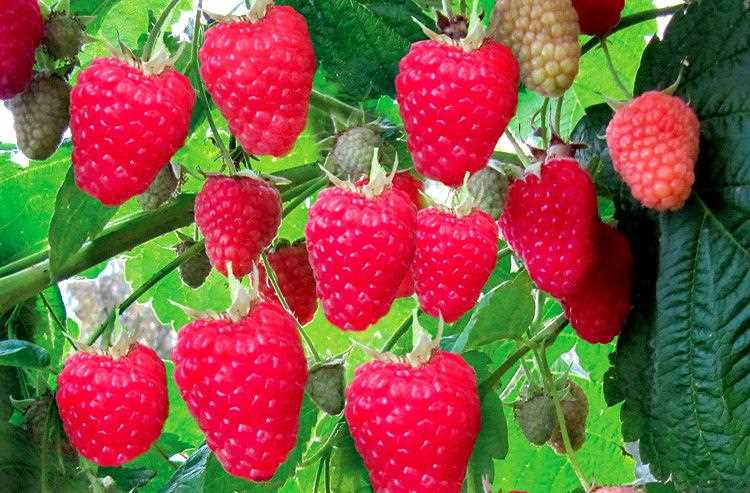
Summer pruning is a technique that involves removing any dead, diseased, or damaged canes from the raspberry plants during the growing season. This method helps improve air circulation and sunlight penetration, reducing the risk of fungal diseases and promoting fruit ripening. Here’s how you can do summer pruning:
- Inspect the raspberry plants regularly and identify any canes that are dead, diseased, or damaged. These canes are usually discolored, brittle, or have visible signs of fungal infection.
- Using sharp and clean pruning shears, carefully cut off the identified canes at the base, making sure to avoid cutting into the healthy canes.
- Dispose of the pruned canes properly to prevent the spread of diseases.
By regularly performing summer pruning, you can keep your remontant raspberries healthy and productive throughout the growing season.
Method 2: Dormant Pruning
Dormant pruning is a method that involves cutting back all the canes to ground level during the dormant season. This method helps rejuvenate the raspberry plants and encourages the production of new, healthy canes for the next growing season. Here’s how you can do dormant pruning:
- Wait until the remontant raspberry plants have entered dormancy, usually in late winter or early spring.
- Starting at the base of the plants, use sharp and clean pruning shears to cut off all the canes at ground level.
- Remove any pruned canes from the area to prevent the spread of diseases.
After performing dormant pruning, it’s a good idea to apply a layer of mulch around the base of the plants to help conserve moisture and suppress weeds.
Both summer and dormant pruning are important for maintaining the health and productivity of remontant raspberries. By using these two methods, you can ensure a bountiful harvest of delicious raspberries year after year.
Method 1: Summer Pruning for Optimized Growth
Summer pruning is an essential technique for maximizing the growth and productivity of remontant raspberries. By carefully pruning the canes during the summer months, you can help redirect the plant’s energy towards fruit production, resulting in a larger and more abundant harvest.
Step 1: Identify the New Primocanes
Before you begin pruning, it’s important to be able to identify the new primocanes. These are the canes that have grown in the current season and will produce fruit in the following year. The primocanes will have a green color, while the older canes will be brown and woody.
Step 2: Remove the Old Floricanes
After identifying the new primocanes, you can start by removing the old floricanes. Floricanes are the canes that have already produced fruit in the current season. To do this, use sharp pruners to cut the floricanes off at the base, as close to the ground as possible. This will help make room for new growth and prevent overcrowding.
Step 3: Thin Out the Primocanes
Next, you’ll want to thin out the primocanes to promote better air circulation and light penetration. This will help prevent disease and improve fruit development. Select the strongest and healthiest primocanes, and remove any weak or damaged ones. Aim to have around 4-6 primocanes per plant.
Step 4: Prune to the Desired Height
Finally, prune the primocanes to the desired height. This will depend on your personal preference and the specific variety of raspberry you are growing. Generally, pruning to a height of 4-5 feet is recommended. Use sharp pruners to make clean cuts just above a bud or node.
By following these steps and implementing summer pruning, you can optimize the growth and productivity of your remontant raspberries. Remember to prune during the summer months, when the canes have finished producing fruit but are still actively growing. This will ensure that your plants have enough time to recover and develop new growth before the next fruiting season.
Method 2: Winter Pruning for Increased Yield
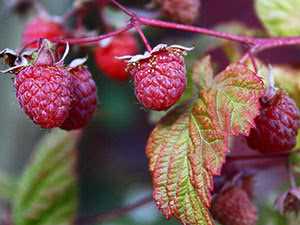
Another effective method for pruning remontant raspberries is winter pruning. Winter pruning, which is done during the dormant season, can help increase the yield of your raspberry plants.
Step 1: Prepare the Plant
- In late fall or early winter, after the leaves have fallen off the raspberry plants, remove any remaining fruit or dried canes from the previous growing season.
- Be sure to wear protective gloves and clothing to avoid any thorns or scratches.
Step 2: Prune the Canes
- Identify the strongest and healthiest canes, which are usually thicker and have a lighter color compared to older canes.
- Using sharp pruning shears, cut down these canes to a height of about 4-6 inches above the ground.
- Remove any smaller or weaker canes, as well as any canes that are growing too close together.
- Make clean cuts at a 45-degree angle just above a bud.
Step 3: Clean and Dispose of Pruned Material
- Collect all the pruned canes and debris and remove them from the raspberry patch to prevent the spread of diseases or pests.
- Dispose of the pruned material by burning it or placing it in a compost pile away from the raspberry plants.
Step 4: Maintain the Pruned Plants
- Apply a layer of mulch around the base of the pruned raspberry plants to help protect the roots and conserve moisture.
- Water the plants thoroughly after pruning and continue to provide regular watering throughout the growing season.
- Monitor the plants for any signs of disease or pests, and take appropriate action if necessary.
By following these steps for winter pruning, you can help increase the yield of your remontant raspberries. Pruning during the dormant season allows the plants to focus their energy on producing new canes and larger fruit, leading to a bountiful harvest in the following growing season.
Step-by-Step Guide to Summer Pruning Remontant Raspberries
1. Choose the Right Time
Summer pruning is typically done in July or August when the raspberry canes have grown to their full height and have produced fruit. At this time, the canes will have hardened and become woody.
2. Prepare the Tools
Gather the necessary tools for pruning, including pruning shears or loppers, gloves, and a pruning saw for thicker canes. Make sure all tools are clean and sharp to prevent damage to the canes.
3. Identify the Canes
Identify the canes that have finished fruiting by their dried or shriveled appearance. These canes will not produce any more fruit and can be pruned back.
4. Remove the Old Canes
Using the pruning shears or loppers, cut the old canes that have finished fruiting at ground level. Remove them completely from the plant to prevent disease and pests from spreading.
5. Select the Strongest Canes
Choose the healthiest and strongest canes to keep for next year’s fruiting season. These canes should be thick and vigorous with no signs of disease or damage. Select about 4-6 canes per plant.
6. Prune the Selected Canes
Using the pruning shears or loppers, prune the selected canes to a height of about 4-5 feet. This will encourage lateral branching and more fruit production. Remove any side shoots or suckers from the lower part of the canes.
7. Remove Weak Canes
If there are any weak or spindly canes left, remove them to ensure that the plant’s energy is focused on the strong canes.
8. Clean Up and Disposal
Collect all the pruned canes and plant debris and dispose of them properly. Do not compost any diseased or pest-infested material.
9. Water and Mulch
Water the raspberry plants well after pruning to help them recover from the stress. Apply a layer of mulch around the base of the plants to conserve moisture and suppress weeds.
10. Monitor and Maintain
Monitor the raspberry plants regularly for any signs of disease or pest infestation. Continue to provide proper care, including watering, fertilizing, and training the canes as necessary.
“””
Step-by-Step Guide to Winter Pruning Remontant Raspberries
Winter pruning is an essential activity for maximizing the harvest of remontant raspberries. By removing old canes and shaping the plant, you can ensure that the new canes will grow vigorously and bear abundant fruit. Follow these step-by-step instructions to prune your remontant raspberries in winter:
1. Gather the necessary tools:
- Pruning shears
- Gloves
2. Choose the right time for pruning:
The best time to prune remontant raspberries is in late winter or early spring, before new growth starts. This is typically between February and March, depending on your climate.
3. Identify the old canes:
Look for the canes that have already borne fruit in the previous season. These canes will appear woody and have a grayish-brown color.
4. Cut the old canes:
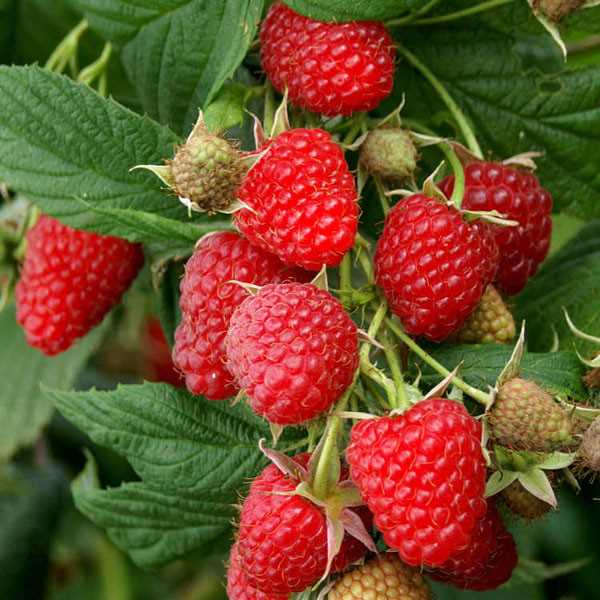
- Using the pruning shears, cut the old canes at ground level or just above the crown of the plant.
- Dispose of the cut canes to prevent the spread of diseases.
5. Shape the plant:
Trim the remaining canes to a height of about 4 to 5 feet. This will promote the growth of new lateral branches and allow for easier harvesting.
6. Remove any weak or damaged canes:
- If you notice any canes that are thin, weak, or damaged, prune them back to encourage stronger growth.
7. Clean up the surrounding area:
Remove any fallen leaves, mulch, or debris from around the plants to prevent the spread of pests and diseases.
8. Apply fertilizer and mulch:
After pruning, apply a balanced fertilizer around the base of the plants and cover the area with a layer of mulch to help retain moisture and suppress weed growth.
9. Monitor and maintain:
Throughout the growing season, keep an eye on your remontant raspberries and remove any new canes that appear weak or overcrowded. This will ensure that the plant can channel its energy into producing high-quality fruit.
By following these step-by-step instructions, you can effectively prune your remontant raspberries and maximize your harvest. Enjoy the fruits of your labor!
“””
Tips for Pruning Remontant Raspberries Like a Pro
Pruning remontant raspberries is an essential task for maximizing your harvest. With proper pruning techniques, you can encourage vigorous growth, increase fruit production, and prolong the lifespan of your plants. Here are some tips to help you prune your remontant raspberries like a pro:
- Timing: Pruning remontant raspberries is typically done in early spring or late winter, before new growth emerges. It is essential to prune before the buds break, as this will prevent any damage to new shoots.
- Cleaning: Before you start pruning, remove any dead, damaged, or diseased canes. These canes can harbor pests and diseases, so it is crucial to get rid of them to maintain the overall health of your raspberries.
- Thinning: Remontant raspberries can produce multiple canes in a growing season. To ensure optimum fruit production, thin out the canes by removing any weak or crowded canes. Leave only the strongest and healthiest canes for maximum yield.
- Height: Keep in mind the desired height of your raspberry plants when pruning. Cut the canes to a height of around 4-5 feet for easier maintenance and harvesting. If you want taller plants, you can leave them a bit longer, but be mindful that taller canes may require additional support.
- Training: As you prune, consider training the canes to a trellis or support system. This will help keep the plants upright, prevent them from sagging under the weight of the fruit, and facilitate better air circulation. Pruning is an excellent opportunity to adjust the positioning of the canes and tie them to the trellis, ensuring they grow in the desired direction.
- Disinfection: To prevent the spread of diseases, disinfect your pruning tools before and after each cut. You can use a solution of bleach and water or rubbing alcohol to sterilize the blades. This simple step will help maintain the health of your raspberries and reduce the risk of infection.
- Aftercare: After pruning, make sure to apply a layer of organic mulch around the base of your raspberry plants. This will help conserve moisture, suppress weed growth, and provide additional nutrients. Water the plants regularly, especially during dry spells, to promote healthy growth and fruit development.
By following these tips, you can ensure that your remontant raspberries thrive and provide you with a bountiful harvest. With proper pruning and care, your plants will reward you with an abundance of delicious raspberries season after season.
Maximizing Harvest with Pruning: Success Stories and Key Takeaways
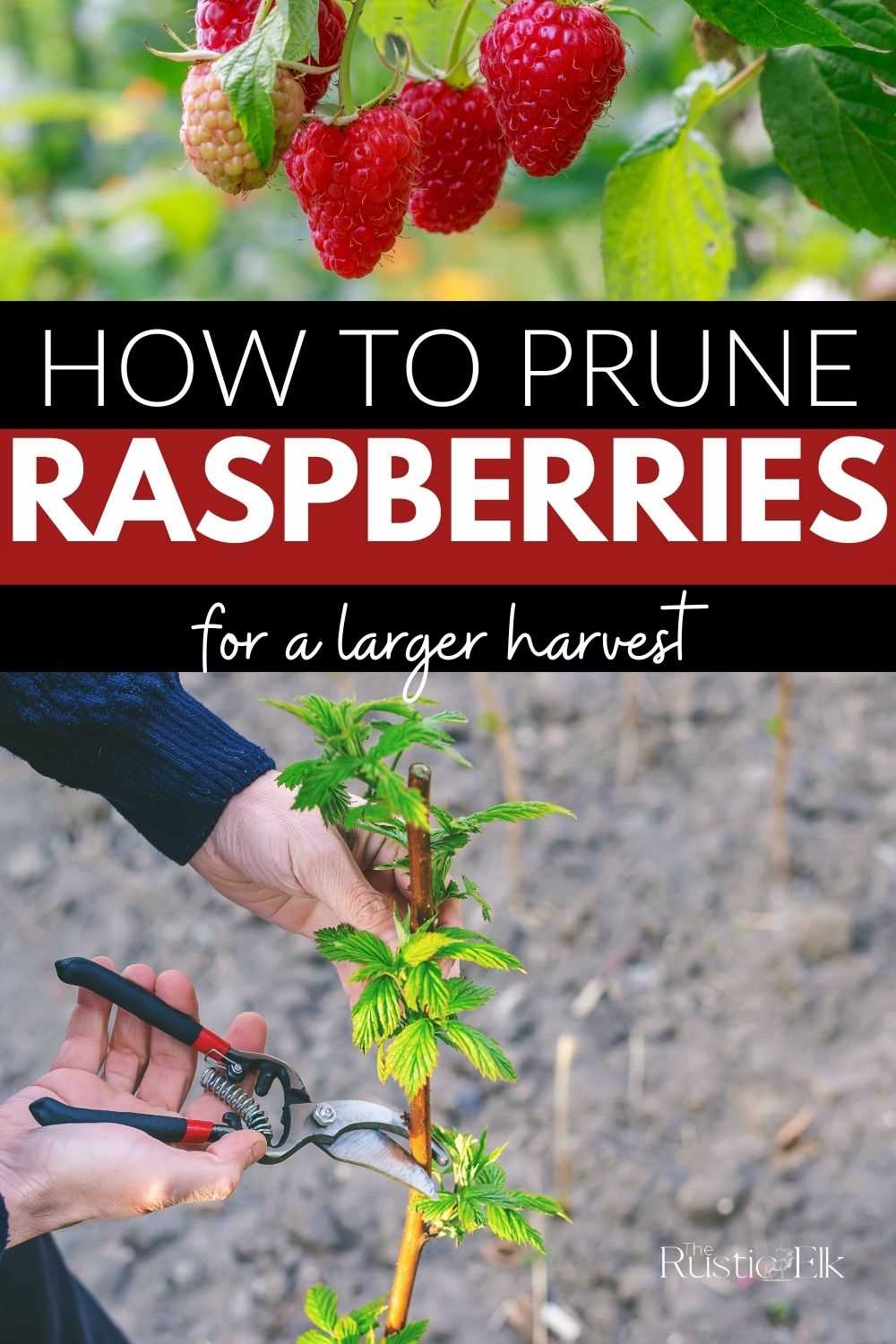
Success Stories
- John Smith: A Year of Abundance
- Mary Johnson: From Modest Harvests to Bumper Crops
- Robert Brown: Doubling the Yield
These are just a few success stories from gardeners who have used pruning techniques to maximize their raspberry harvests.
Key Takeaways
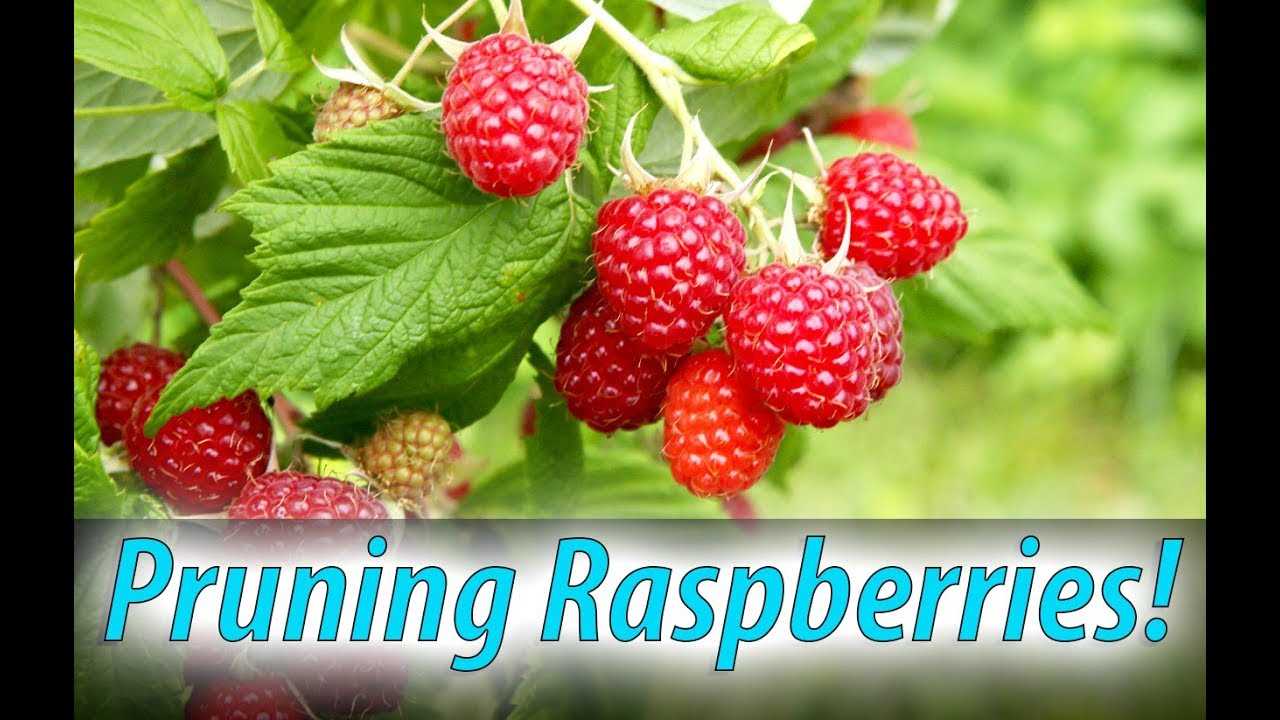
Based on the experiences of successful gardeners, here are some key takeaways for maximizing raspberry harvest through pruning:
- Regular Pruning: Regular pruning is essential for remontant raspberries to maintain their productivity. Prune in late winter or early spring before new growth emerges.
- Remove Old Canes: Remove canes that have fruited in the previous year. These canes will not produce berries again and should be cut down to the ground.
- Thin to the Strongest Canes: Thin out weak or damaged canes, leaving only the strongest ones. This promotes better air circulation and sunlight penetration, leading to healthier plants and larger berries.
- Train Canes: Train the remaining canes to a trellis or support system to keep them upright and prevent them from leaning or touching the ground.
- Prune for Primocanes: Prune the primocanes (first-year canes) to promote lateral branching, which will result in more fruiting laterals and a higher yield.
- Remove Suckers: Remove suckers that grow from the base of the plant to prevent them from competing with the main canes for nutrients and sunlight.
- Maintain a Clean Area: Remove any fallen leaves or debris from the raspberry bed to reduce the risk of diseases and pests.
- Monitor and Adjust: Regularly monitor the growth and health of the raspberry plants and make necessary adjustments to the pruning techniques based on their specific needs.
By following these key takeaways and adapting them to your specific growing conditions, you can increase the yield of your remontant raspberries and enjoy a bountiful harvest year after year.
Question-answer:
How often should remontant raspberries be pruned?
Remontant raspberries should be pruned twice a year. Once in early spring, before new growth begins, and once in late summer or early fall.
What is the purpose of pruning remontant raspberries?
The purpose of pruning remontant raspberries is to remove old, diseased, or damaged canes, and to allow for better air circulation and sunlight penetration, which promotes healthy growth and maximum fruit production.
Can pruning remontant raspberries help control pests and diseases?
Yes, pruning remontant raspberries can help control pests and diseases. By removing infected canes and creating space between canes, it is easier to inspect the plants for pests and diseases, and it also improves air circulation, which reduces the likelihood of fungal diseases.
How should I prune remontant raspberries for maximum fruit production?
To maximize fruit production, it is recommended to use the two-method approach. In early spring, cut back all canes to ground level. Then, in late summer or early fall, remove the old fruiting canes that have finished producing, leaving the new canes that will produce fruit the following year.
What should I do with the pruned canes?
The pruned canes should be removed from the garden and either composted or discarded. It is important to properly dispose of the pruned canes to prevent the spread of diseases and pests.







